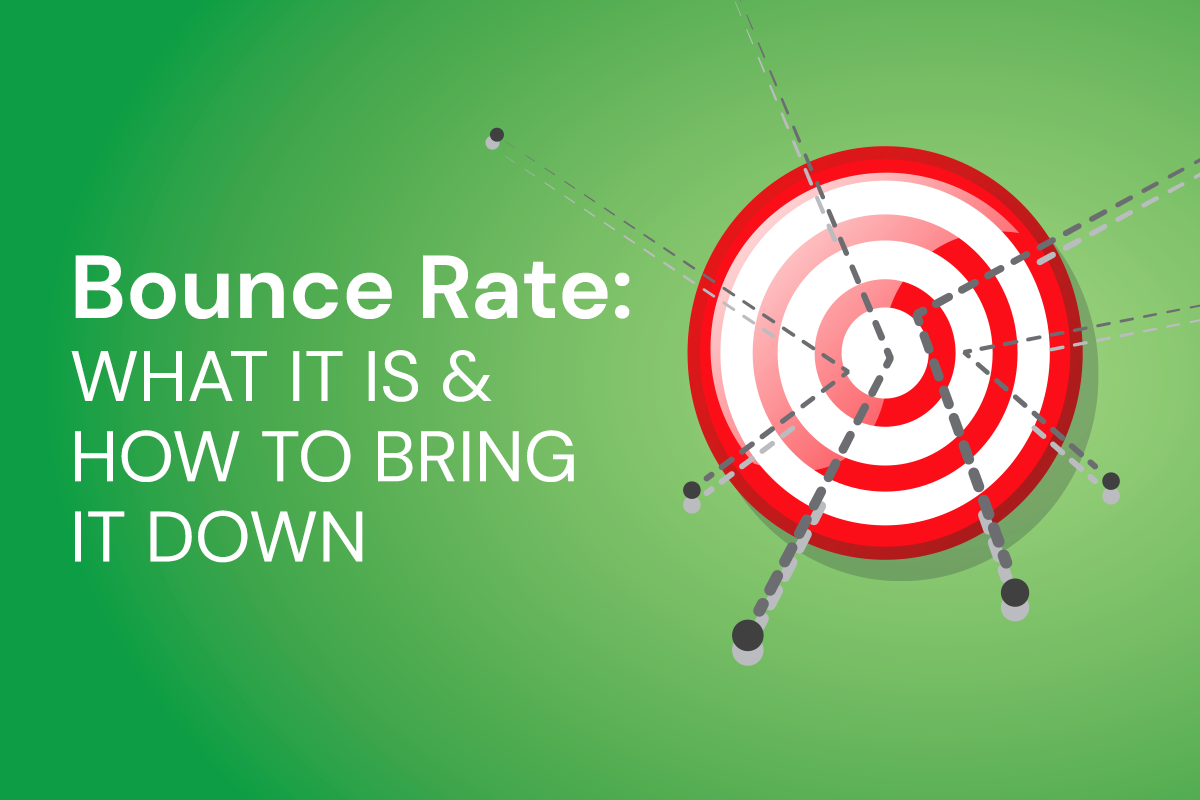For clients who subscribe to our monthly maintenance plans, we send out Google Analytics reports to check their current web performance. Bounce Rate is one of the metrics analyzed, and it is percentage of single-page sessions. In other words, the more people who leave your website after looking at just one page, the higher your bounce rate. And a high bounce rate is not ideal. When Google sees a website with a high bounce rate, it assumes the site is not providing value for searchers. A consistently high bounce rate can ultimately hurt your search engine rankings.
But a relatively high bounce rate not necessarily a reason to panic. We’ll discuss when it’s okay to have a high(ish) bounce rate, and how to improve on your bounce rate in general.
When a High Bounce Rate is an Okay Thing
Perhaps you are a restaurant, and your visitors came to your site because they were searchingyou’re your hours or your menu. And when they found that information, they left. Maybe you have a website with the complete works of William Wordsworth on one page, and your user searched for “Tintern Abbey” and stayed for two hours on one page of your website, then left. Do note that bounce rate does not measure the time spent on a page—just that the visitor came to one page, then left. There are all sorts of reasons why a person would not explore your website in greater detail.
Another possibility is that you are posting a link to a blog post on social media. Visitors will most often come to your site to read that post, then leave. And that’s okay! You have gotten precisely the glory your brilliant post deserved. Meanwhile, your blog post, if successful, is probably being shared and retweeted, which should more than negate any deleterious SEO effects of a high bounce rate.
When a High Bounce Rate is a Bad Thing
If you have design or usability issues, that’s bad. How many times have you given up on a website because the content was formatted as a slideshow surrounded by a ton of ads? Or because it’s too hard to read on your mobile device? Maybe your website loads very slowly because your images are too large or your server is inadequate. That’s a bad reason for a high bounce rate.
Another possibility is that you simply aren’t giving your visitors something else to do when they visit your website. Perhaps you’ve sent them to a landing page, and that page only has a contact form or a “like me on Facebook” button. And that’s great—if your visitor does those things, your landing page is successful. But you could also encourange them to put up their feet and stay a while.
How to Fix a High Bounce Rate
Offer Something Else! At the bottom of a blog post, have you noticed that lots of people have a section to the effect of “If you liked _____, you’ll love ______!” Or you can do something similar with your e-commerce website by cross-selling or upselling products. Even if your website has nothing to do with retail or with blogging, you can still pepper your text with links and references to other parts of your website.
Improve Your Site Architecture. If you don’t have one already, add a search box. Consider using a sidebar menu. Make it easy for people to find your content in multiple ways. Think about using breadcrumbs, a type of secondary navigation scheme that reveals the user’s location in a website. And make sure that every page offers multiple ways to navigate the site. Don’t leave your users stranded.
Stay Updated! If your website looks like it’s from 1996, that can scare some people away. Unfortunately, the expiration date on web design is pretty obvious, and things have come along way even in the last 2 years, with responsive design for mobile devices, embedded fonts, more subtle animation efffects.
Need help reducing your bounce rate and making your website more of a destination? We can help. Just contact us and we can offer a consultation regarding your existing web presence.






